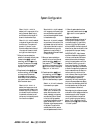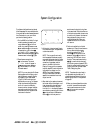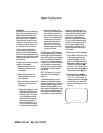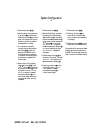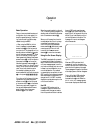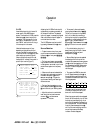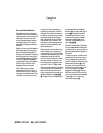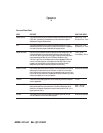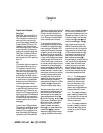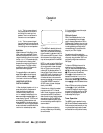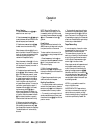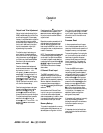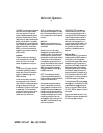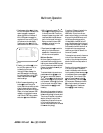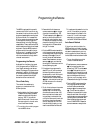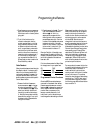
Operation
Digital Audio Playback
Dolby Digital
Dolby Digital (also known as AC-3) is a
digital audio system that delivers up to
five full-range surround channels (left,
center, right, left surround and right
surround) plus a special dedicated Low-
Frequency Effects (LFE) channel. This
represents a major advancement over
traditional analog surround in that each
surround channel is fully discrete and
capable of full bandwidth reproduction.
Dolby Digital is available on DVD and
LV discs, and is a part of the new high-
definition television (HDTV) system and
digital TV.
DTS
DTS is another digital audio system that
is also capable of delivering up to five
full-range audio channels (left front,
center, right front, right surround and
left surround) along with a special low-
frequency channel. Although both DTS
and Dolby Digital are digital, they use
different methods of encoding the signals
on a disc, and thus it requires different
decoding circuits than Dolby Digital to
convert the signals back to analog.
DTS encoded soundtracks are available
on select DVD and LD discs, as well as on
special audio-only DTS discs. You may
use any LD or CD player equipped with a
digital output to play DTS encoded discs
with the AVR65. All that is required is to
connect the player’s output to either the
Coaxial or Optical input on the rear
panel °·.
In order to listen to DVDs encoded with
DTS sound track, the DVD player must be
compatible with the DTS signal, as indi-
cated by a DTS log on the player’s front
panel. Note that early DVD players may
not be able to play DTS encoded DVDs.
This does not indicate a problem with the
AVR65, as some players cannot pass the
DTS signal through to the digital out-
puts. If you are in doubt as to the ability
of your DVD player to handle DTS discs,
consult the player’s owner’s manual.
To utilize the digital modes you must
have a digital source properly connected
to the AVR65. Connect the Digital datas-
tream outputs from DVD players, HDTV
receivers and CD players to the Coaxial
or Optical inputs on the rear panel °
·. Note that an optional, external RF
demodulator is required to use the AVR65
to listen to the Dolby Digital soundtracks
available on laser discs. Connect the RF
output of the LD player to the demodula-
tor, and then connect the digital output of
the demodulator to the the Coaxial or
Optical inputs °· of the AVR65. No
demodulator is required for use with DTS
encoded laser discs. In order to provide a
backup signal and a source for recording,
the analog outputs provided on digital
source equipment should also be con-
nected to their appropriate inputs on the
AVR65 rear panel (e.g., connect the
analog stereo audio output from a DVD to
the DVD inputs ¶ on the rear panel
when you connect the digital outputs.)
When playing back a digital source, first
select the input using the remote or front
panel controls as outlined above. Next
select the digital source by pressing the
appropriate Digital Input button w
ˆ and then using the
⁄
/
¤
buttons g
on the remote or the Selector buttons
¸ on the front panel to choose either
COAXIALor OPTICAL, as it
appears in the Main Information
Display U or on-screen display. Press
the Set button i ˜ to enter the
desired choice. When the digital source
is playing, the AVR65 will automatically
detect if it is a multichannel Dolby Digital
or DTS source or a conventional PCM
signal, which is the standard output from
CD players. An indicator will light in the
Information Display to confirm the digi-
tal signal is AC-3 H or PCM I and if
the source is OPTICAL E or COAX G.
When a digital source is playing, the
AVR65 will automatically switch to the
proper surround mode. It is important to
note, however, that not all Dolby Digital
or DTS sources are encoded with the full
complement of five channels plus LFE.
When a digital source is playing, the
Main Information DisplayU or
on-screen display will change to show the
input source and digital type (OPTICAL
or COAX). When a source with digital
encoding is playing, the input source
name will appear in the Information
Display or on-screen display, followed by
a numeric key to the type and number
of channels being decoded as follows:
3/2.1: This message appears
when a full complement of Dolby
Digital signals is present: 3 front
channels (left, center and right),
2 surround channels (surround
left and surround right) and “1”
channel, which is the dedicated Low
Frequency Effects (LFE) channel.
3/1: This message indicates the
system is decoding a standard Dolby
Pro Logic signal with left, center and
right front channels and a signal
mono surround channel.
2/0: This message indicates that
the system is decoding a traditional
two-channel stereo signal and that
no center, surround or LFE signals
are present.
27
AVR65 120 volt Rev (C) 10/6/98



